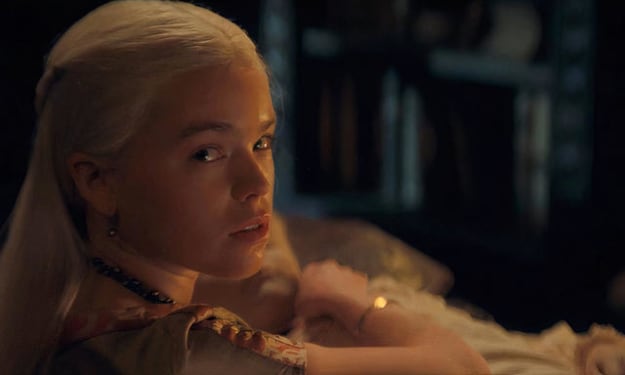Content warning
This story may contain sensitive material or discuss topics that some readers may find distressing. Reader discretion is advised. The views and opinions expressed in this story are those of the author and do not necessarily reflect the official policy or position of Vocal.
The Impact of Streaming Services on Traditional Television.
A Digital Revolution.

Introduction.
The advent of streaming services has disrupted the traditional television landscape, transforming the way we consume entertainment. With the rise of platforms like Netflix, Amazon Prime Video, and Disney+, viewers now have access to a vast library of content at their fingertips, revolutionizing the television industry. In this article, we delve into the impact of streaming services on traditional television, exploring the changing dynamics, consumer behavior shifts, and the implications for the future. Through real-life examples, we shed light on how streaming services have reshaped the entertainment landscape, captivating audiences worldwide and setting new trends in the digital era.
The Rise of Streaming Services.
Streaming services have experienced exponential growth in recent years, capturing the attention of millions of viewers worldwide. Netflix, the pioneer of the streaming revolution, disrupted the traditional TV model by offering on-demand access to a vast library of movies and TV shows. This success sparked the emergence of other major players in the industry, including Amazon Prime Video, Hulu, and Disney+, among others. These platforms have capitalized on technological advancements, such as high-speed internet and mobile devices, allowing viewers to stream content anytime, anywhere. The convenience, affordability, and extensive content libraries offered by streaming services have attracted a massive global audience, challenging the dominance of traditional television networks.
Real-Life Example: The Rise of Netflix .
Netflix's journey from a DVD-by-mail service to a global streaming powerhouse is a prime example of the impact of streaming services. In 2013, the company took a bold step by producing its own original content, starting with the critically acclaimed series "House of Cards." This move disrupted the traditional television model, as Netflix bypassed traditional networks and brought exclusive content directly to its subscribers. The success of "House of Cards" demonstrated the power of streaming services to create high-quality, binge-worthy content that resonated with audiences worldwide. Since then, Netflix has continued to produce award-winning originals, securing its position as a major player in the entertainment industry.
Changing Viewer Behavior.
Streaming services have not only changed the way content is delivered but also influenced viewer behavior. Binge-watching, the act of consuming multiple episodes or even entire seasons of a TV series in one sitting, has become a cultural phenomenon. The ability to access entire seasons at once has created a new way of consuming content, offering viewers more control over their viewing experience. Additionally, streaming services have introduced personalized recommendations and curated playlists, using sophisticated algorithms to cater to individual preferences. This level of customization has further transformed viewer behavior, as people now expect tailored content suggestions and a seamless user experience.
Real-Life Example: The Rise of Binge-Watching.
The popularity of binge-watching reached new heights with the release of Netflix's original series "Stranger Things." The show's captivating storyline and nostalgic appeal drew viewers in, leading to widespread binge-watching. The success of "Stranger Things" highlighted the power of streaming services to create addictive and immersive content that encourages viewers to consume episodes back-to-back. The show's release model, with entire seasons dropping at once, fueled the binge-watching phenomenon and sparked conversations and social media buzz as fans eagerly shared their theories and reactions. This cultural phenomenon exemplifies how streaming services have transformed the way we consume television and sparked new communal viewing experiences.
The Challenges for Traditional Television.
Traditional television networks are facing significant challenges in the wake of streaming services' rise. The cord-cutting trend, where viewers cancel their cable or satellite subscriptions in favor of streaming services, has disrupted the traditional TV business model. As more viewers shift to streaming platforms, advertisers and networks must adapt their strategies to reach the fragmented audience. Moreover, the exclusive content offered by streaming services has led to increased competition for original programming, putting pressure on traditional networks to produce compelling and innovative content. To stay relevant, traditional television networks are embracing streaming themselves or partnering with existing platforms, blurring the line between traditional TV and streaming services.
Real-Life Example: HBO's Transformation.
HBO, a long-standing premium cable network, recognized the impact of streaming services and adapted its business model. The launch of HBO Max, the network's streaming platform, allowed subscribers to access HBO's acclaimed content library alongside original programming and licensed content. By embracing streaming, HBO expanded its reach and attracted a new audience of cord-cutters and digital natives. This strategic move showcased the network's ability to evolve and remain competitive in the changing entertainment landscape. It also exemplifies how traditional television networks are leveraging streaming services to extend their reach and capture the growing segment of viewers who prefer on-demand content.
The Future of Television.
The impact of streaming services on traditional television is undeniable, and the landscape will continue to evolve. The future of television lies in the convergence of streaming and traditional broadcasting, where viewers have access to both on-demand content and live programming. The rise of live streaming platforms, such as YouTube TV and Hulu + Live TV, indicates a shift towards hybrid models that cater to diverse viewer preferences. Furthermore, advancements in technology, such as 5G networks and virtual reality, will open up new possibilities for immersive and interactive viewing experiences. As the industry continues to innovate, the boundaries between streaming services and traditional television will blur, creating a dynamic and exciting future for entertainment.
Conclusion.
Streaming services have revolutionized the television industry, offering viewers unprecedented convenience, choice, and customization. Through real-life examples, we have explored the profound impact of streaming services on traditional television, from the rise of major players like Netflix to the transformation of viewer behavior and the challenges faced by traditional networks. As the digital revolution continues, the future of television lies in the convergence of streaming and traditional broadcasting, with innovative technologies shaping the way we consume content. The entertainment landscape is ever-evolving, and the influence of streaming services will continue to shape its trajectory.
About the Creator
Ogunwusi Adedapo Kolawole
In a world filled with endless possibilities, it is the brave souls who dare to dream and pursue their passions that leave an indelible mark on the tapestry of life. Meet: Ogunwusi Adedapo, a visionary, a dreamer, and an agent of change.
Enjoyed the story? Support the Creator.
Subscribe for free to receive all their stories in your feed. You could also pledge your support or give them a one-off tip, letting them know you appreciate their work.





Comments
There are no comments for this story
Be the first to respond and start the conversation.